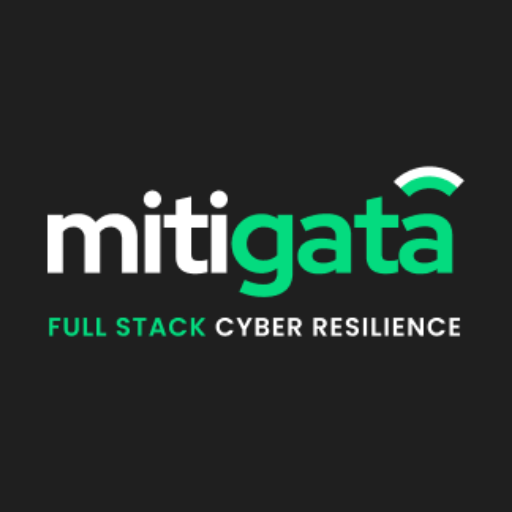Worried about facing SEBI penalties for missing CSCRF compliance?
It’s a growing concern for many SEBI-regulated organisations.
The problem usually doesn’t start with a major security failure. It often begins with small compliance gaps that go unnoticed. Maybe your Board didn’t formally approve the Cybersecurity Committee. Maybe the quarterly VAPT was missed or conducted by a non–CERT-In auditor. Or perhaps audit findings were not closed within the deadlines SEBI expects.
These are the exact slip-ups that trigger penalties, warnings, or even trading restrictions.
In this blog, we will explain how SEBI penalties usually arise, the most common non-compliance mistakes companies make, and what you can do right now to stay fully compliant with CSCRF requirements.
How Mitigata Helps You Stay CSCRF-Compliant and Penalty-Free

As one of India’s most trusted cyber resilience company, Mitigata has helped 800+ businesses in meeting SEBI’s tight CSCRF standards with confidence. Unlike firms that only advise and leave the hard part to you, we take ownership of the entire compliance journey – from gap assessment and policy creation to VAPT, SOC setup, and final certification.
The Smartest Way to Get SEBI CSCRF Certified Fast
Achieve SEBI CSCRF certification at 30% reduced cost using our enterprise-grade tools and in-house cybersecurity teams.

Here’s why companies choose us over others:
End-to-End Delivery: You work with a single team managing every step from planning and implementation to audits, and certification.
Faster Certification Timelines: Our in-house experts and parallel execution model help you close gaps and meet SEBI deadlines well within time.
Cost-Effective Approach: With enterprise-grade tools and proven workflows, our clients achieve compliance at up to 30% lower costs compared to traditional vendors.
Deep Technical Expertise: From our certified VAPT professionals to our 24×7 SOC, every aspect is handled internally, without third-party dependency.
Proven Track Record: With 800+ happy clients across 25+ industries, Mitigata’s experience ensures you stay both compliant and resilient.
What Is SEBI’s CSCRF and Why Compliance Matters
All SEBI-regulated organisations, including stockbrokers, asset management companies (AMCs), RTAs, depositories, and mutual funds, are subject to the SEBI Cyber Security and Cyber Resilience Framework (CSCRF). Its objective is to guarantee that players in the financial markets put robust cybersecurity measures in place and are able to successfully recover from cyberattacks.
Basic IT security is not all that the CSCRF covers. Risk identification, preventive and investigative controls, incident response, recovery plans, and a well-defined governance structure are all necessary.
For instance, a stockbroker needs to implement a disaster recovery plan, employee training, VAPT testing, real-time monitoring, and firewall and antivirus software. Serious regulatory penalties and harm to one’s reputation may result from breaking these commitments.
Are you counted among those 60% of GRC users who manage compliance manually? It’s high time to check these popular automated GRC tools in India
Common SEBI Cyber Security Violations That Lead to Penalties
Understanding what causes SEBI penalties allows organisations to structure their compliance efforts. These are the most common violations:
Failure to Perform Mandatory VAPT: Organisations must conduct Vulnerability Assessment and Penetration Testing (VAPT) at least every six months. Missing this deadline or doing basic assessments that do not cover all important systems is the topmost violation as per SEBI.
Inadequate Incident Response and Breach Reporting: Under the CSCRF, cybersecurity events must be reported to SEBI within six hours of identification. Many businesses fail to create adequate incident detection methods or postpone reporting for fear of reputational damage, increasing their penalty.
Inadequate Access Control and Authentication: Instances of weak password requirements, lack of multi-factor authentication (MFA) on sensitive systems, or a general absence of role-based access controls, all lead to failures in SEBI audit findings. Sharing credentials or having unrestricted administrative access are major violations.
Inadequate Log Management and Monitoring: All organisations must have complete logs of all sensitive systems for at least a year as well as perform 24/7 monitoring for suspicious activities. Failure to such things demonstrates a bad security posture, which attracts penalties.
The Fast Lane to SEBI CSCRF Certification Starts Here
800+ B2B clients trust us for faster and more reliable SEBI CSCRF compliance across industries.

Inadequate Security Awareness Training: SEBI requires that all staff receive verified cybersecurity training at least twice a year. If an organisation can’t show training records or fails to conduct phishing simulations, it is non-compliant.
Unpatched Systems and Old Security Controls: Using out-of-date operating systems and failing to deploy important security patches is negligent. This violation becomes severe when exploited vulnerabilities result in actual breaches.
Non-Compliance with Data Protection Standards: Inadequate data encryption at rest and in transit, incorrect data retention rules, and failure to deploy data loss prevention (DLP) procedures all violate the CSCRF’s data protection obligations.
Missing or Insufficient Documentation: SEBI expects complete documentation of security protocol, policies and procedures, exploitable network architecture diagrams and inventory of assets. A compliance gap is defined as the absence of these papers or the continued use of old versions.
Every day, around 3.4 billion phishing emails are sent. Learn about thesetypes of phishing emails and stay ahead of such scams.
How SEBI Enforces CSCRF: Audits, Circulars & Show Cause Notices
SEBI has ramped up enforcement of CSCRF in recent years, conducting both scheduled and surprise inspections of regulated entities. These audits typically assess whether the organisation has:
- Implemented technical and organisational controls
- Documented its cybersecurity policies
- Maintained records of training, VAPT, and incident handling
Auditors may interview key personnel, review systems, and request documented evidence. Failure to provide sufficient proof of compliance is treated as a red flag.
What a Show Cause Notice or Penalty Typically Follows
When SEBI discovers a breach, it issues a show cause notice (SCN) outlining the specific instances of noncompliance and giving the organisation a set amount of time – normally 21 days – to explain or correct the matter.
Organisations must reply with thorough explanations, remediation plans with time frames and evidence of corrective actions implemented. If SEBI finds the answer unacceptable, it moves to adjudication, where fines are calculated based on the gravity of the breach, the possible impact, and the organisation’s compliance history. Penalties for violations range from ₹1 lakh to ₹1 crore per day.
Important Circulars and Breach Reporting Timelines:
SEBI produces thorough circulars that outline requirements, deadlines, and reporting formats. Some notables include:
- Cybersecurity incidents must be reported to SEBI within six hours of detection using the designated portal.
- VAPT must be performed every six months, with reports due within 15 days of completion.
- Any critical or high-severity vulnerabilities identified must be remediated within 15 to 30 days.
End-to-End SEBI CSCRF Compliance Managed by Experts
From planning to certification, Mitigata’s all-in-one solution ensures speed, savings, and seamless execution.

How to Avoid SEBI Penalties for Cyber Security Non-Compliance
Avoiding penalties requires a proactive, systematic approach to cybersecurity that goes beyond checkbox compliance. Here’s how companies can stay audit-ready
Conduct Regular Gap Assessments
Assess your cyber security maturity against SEBI’s CSCRF controls. Use gap assessment frameworks to identify weak areas in governance, detection, response, and recovery.
Keep Security Controls Updated
Ensure all firewalls, antivirus, DLP tools, and endpoint protections are regularly updated. Outdated security tools are a violation in themselves and ineffective in real incidents.
Perform Timely VAPT & Fix Findings
SEBI mandates VAPT from CERT-In empanelled vendors. Instead of just running a test, you must also remediate all critical vulnerabilities and submit proof of closure.
Maintain a Documented Incident Response Plan
Your IR plan should detail how your team will respond to various cyber threats, including ransomware, phishing, and insider threats, and must be tested periodically.
Log & Monitor All Critical Systems
Establish centralised logging (via SIEM or similar tools) and set up alerts for anomalous activities. SEBI auditors often ask for log records as evidence.
Train Employees and Maintain Records
Conduct ongoing cybersecurity awareness training. Keep attendance and assessment records, as SEBI may ask to verify your awareness efforts.
Stay Updated With SEBI Circulars and Changes
SEBI updates its guidelines frequently. Assign a compliance officer or use automation tools (like Mitigata) to stay in sync with circulars and breach notification rules.
Check out our expertly curated cyber insurance cost guide and find out which factors affect its premium.
Conclusion
Compliance is not a one-time project but an ongoing commitment that requires continuous monitoring, adaptation, and improvement.
Mitigata simplifies your SEBI CSCRF compliance journey by giving you real-time visibility, control mapping, audit readiness tools, and automated alerts – all from one platform. Whether you’re behind on VAPT cycles or unsure about your incident response readiness, Mitigata helps you close gaps before SEBI finds them.
Contact Mitigata now!

